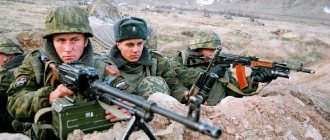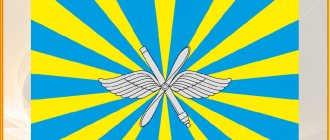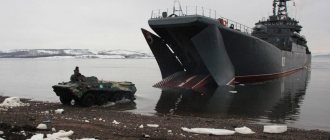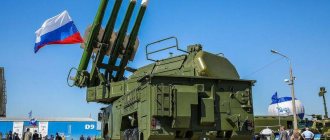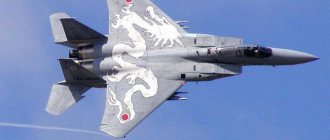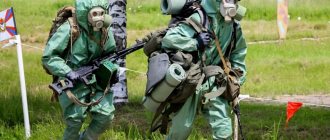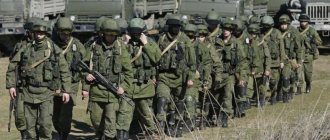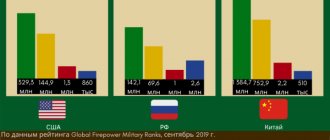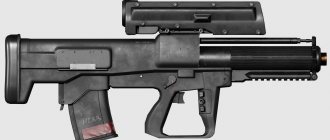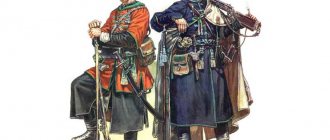“Mechanized infantry,” as motorized rifle troops (MSVs) are called in European countries, form the backbone of the army. Infantrymen, using a variety of vehicles and tractors, conduct large-scale ground operations. MSV military personnel can carry out combat missions either on their own or in conjunction with other troops. Motorized rifles operate in any territory, during the day and at night, and regardless of weather conditions. This branch of the military is universal and has mobility and maneuverability. The infantry is often called the “queen of the fields.” An important attribute of the MSV is the flag of the motorized rifle troops. It represents the greatness of mechanized infantry and the pride of military personnel. A description of the motorized rifle troops flag, as well as the history of its appearance, are presented in the article.
Personnel training
Officer training was carried out by one military academy, 9 higher combined arms command schools, and 2 higher combined arms military-political schools.
Military Academy:
- Military Academy named after M.V. Frunze (Moscow)
Higher combined arms command schools:
- Alma-Ata Higher Combined Arms Command School
- Baku Higher Combined Arms Command School
- Far Eastern Higher Combined Arms Command School (Blagoveshchensk)
- Kiev Higher Combined Arms Command School
- Leningrad Higher Combined Arms Command School
- Moscow Higher Combined Arms Command School
- Omsk Higher Combined Arms Command School
- Ordzhonikidze Higher Combined Arms Command School
- Tashkent Higher Combined Arms Command School
Higher combined arms military-political schools:
- Minsk Higher Combined Arms Military-Political School
- Novosibirsk Higher Combined Arms Military-Political School
Structure and composition of the MSV
The main combat unit of the MSV is the battalion. Regiments, brigades and divisions are formed from motorized rifle, tank, artillery, mortar and other types of battalions. Depending on the assigned tasks to repel the enemy, the composition of military formations varies. For example, if the enemy uses aviation, the motorized rifle unit can be equipped with an air defense missile system division.
The highest combined arms tactical formation of motorized rifle troops is a division, consisting of regiments and brigades. The main tactical units of the brigade are battalions.
Composition of the motorized rifle brigade
- 3 motorized rifle battalions;
- 1 tank battalion;
- up to 3 artillery divisions;
- anti-aircraft missile division;
- support units.
Due to the absence of a separate department of Motorized Rifle Troops under the Ministry of Defense, motorized rifle tactical formations and associations are subordinate to the Commander-in-Chief of the Ground Forces.
Structure of a motorized rifle battalion
The main unit that is part of a combined arms brigade, or regiment, is a battalion. Its structure has not changed since the times of the USSR, and is shown in the figure.
Motorized rifle battalion
The battalion in its structure has several platoons and auxiliary units, all of whose functions are coordinated to fully carry out the combat mission of defense or offensive. The battalion usually operates on a front 3-5 km long and 2-3 km deep. When defending, positions are arranged in 3 echelons (trenches).
Unit order of battle
The order of battle during an offensive can be schematically depicted as follows:
The battle formation during the offensive can be schematically depicted as follows
Combat capabilities
The battalion includes up to 500 military personnel, about 45 infantry fighting vehicles or armored personnel carriers, up to 40 vehicles, three heavy and six light mortars, up to 6 grenade launchers and 10-15 anti-tank systems. In addition, it may include an air defense unit.
With its firepower, an infantry fighting vehicle battalion is capable of destroying about 80 tanks or up to 130 infantry fighting vehicles. If a unit is reinforced by a tank company, then its capabilities increase to 120 tanks or about 170 infantry fighting vehicles.
The result of combat operations of any unit depends on the training and education of personnel, and is directly related to the literacy and personal qualities of the commander.
In the USSR, future officers were trained in the country's 9 combined arms command schools. The senior command staff, or military elite, was trained at the Academy. Frunze. Today in the Russian Federation there are 4 higher general military schools and one academy. Many educational institutions have military departments.
Army tattoos blood type
It is believed that it was these tattoos that gave rise to images that are applied to the body for a practical purpose. Now you can often find inscriptions about epilepsy, allergic reactions, diabetes mellitus and other ailments that are important to consider when providing medical care. In emergency situations, such tattoos literally become life-saving amulets.
Over time, the designation of blood type became mandatory attribute of the military. After all, if something happened to a soldier on the battlefield, blood transfusion would be impossible without establishing its type. This truth was understood back in the time of Peter the Great, but it became especially widespread when Russian soldiers were in Afghanistan.
IMPORTANT: Such a tattoo must contain a number indicating the blood type, as well as the letter R, that is, the Rh factor. After the letter R, a “+” or “-“ is placed, that is, it indicates whether the Rh factor is positive or negative.
Army tattoo on chest with blood type
Typically, such a tattoo is applied to the following places:
- Chest, ribs, armpit - these are considered traditional and most common
- Wrist - less common option, but most noticeable
- Elbow fold - since veins are located here, doctors will certainly pay attention to this place.
- Back of the hand
- The back of the neck - however, this place should be chosen only if the hair does not obscure it.
An army tattoo with blood type can also be placed on a military man’s wrist.
About the banners
According to experts, during the time of Ivan the Terrible there was a very respectful and sacred attitude towards flags. Each banner had its own history, full of victories, exploits and hundreds of sacrificed lives. The red color of the ceremonial caftans of the royal archers became the first main color used in regimental banners. An image on a religious theme was applied to the cloth.
Regimental banners were intended exclusively for ceremonial events. As a permanent flag, the rifle regiments used company (hundred) banners containing shades of red and green. There were also “fraternal” (fiftieth) flags. This regalia was a small piece of multi-colored material on which a cross or other geometric figure was depicted.
About the manufacturer
Judging by numerous consumer reviews, Russian products have proven themselves well. The flag has an impressive design.
Thanks to the presence of stitched edges, it can be used at an outdoor formal event. Regalia are made in any size. The manufacturer uses the best polyester silk as the material for the banner. The product is equipped with a special pocket with which the flag can be attached to a flagpole or pole.
This manufacturer also produces other military-themed products. Motorized infantry during the years of the Soviet Union, and now in Russia, is a place for the service of brave people, true defenders of their Fatherland.
Types of troops of the Russian Armed Forces
In the Russian army, depending on the location (environment) where combat operations are carried out, the following division into types of troops (forces) has been established:
- Ground troops;
- Navy;
- Aerospace Forces.
Each of them can conduct combat operations, both individually and in cooperation with other branches of the Armed Forces.
The main tasks of the Ground Forces (GF) are classified depending on the situation: in peacetime, during a period of threat and during combat operations.
Ground troops
In peacetime SV:
- maintain combat potential and a high level of training of personnel;
- ensure readiness for operational and mobilization deployment;
- are engaged in preparing control centers and units for combat operations;
- create reserves of weapons, military equipment, and materiel;
- participate in peacekeeping missions;
- take part in eliminating the consequences of accidents, disasters and natural disasters.
During a threatened period, ground forces perform slightly different tasks:
- increasing the number of personnel and increasing the combat and mobilization readiness of troops;
- strengthening forces and means of combat duty, as well as reconnaissance of similar forces of a potential enemy in threatened areas;
- increasing the volume of reserve training;
- participation in certain territorial defense activities;
- preparing weapons and military equipment for combat use, building up the logistics base and the capabilities of repair bodies;
- covering the state border;
- preparation of initial defensive operations.
In wartime, the Army faces the following tasks:
- strategic deployment of the Russian army;
- localization of possible conflicts and defense using units of constant readiness, and, if necessary, reserve units;
- conducting defensive and counter-offensive operations jointly with member countries of the Collective Security Treaty Organization (CSTO);
- participation in repelling enemy aerospace attacks and landings;
- participation in territorial defense.
Navy Parade
The main tasks of the Navy include:
- deterrence from the use of military force or the threat of its use against Russia;
- ensuring the protection of the country's sovereignty, creating and maintaining conditions to ensure the safety of maritime economic activities;
- ensuring Russia's naval presence in the World Ocean;
- display of flag and military force, visits by ships and vessels of the Navy;
- ensuring participation in military, peacekeeping and humanitarian actions carried out by the world community.
In August 2015, the Aerospace Forces were formed by Presidential Decree.
Aerospace Forces
Tasks of the Aerospace Forces:
- repelling aggression in the aerospace sphere and protecting command posts, troop groups, administrative and political centers, industrial and economic regions, the most important economic facilities and infrastructure of the country from enemy attacks;
- defeating enemy targets and troops using conventional, precision-guided and nuclear munitions;
- aviation support for combat operations of other branches of the Armed Forces and branches of the armed forces;
- defeating the warheads of enemy ballistic missiles attacking important government and military targets;
- providing senior management levels with reliable information about the detection of ballistic missile launches and warning about a missile attack;
- monitoring space objects and identifying threats to Russia in space and from space, and, if necessary, countering such threats;
- launching spacecraft into orbit, controlling military and dual-use satellite systems in flight and using some of them in the interests of providing troops with the necessary information;
- maintaining the established composition and readiness for use of military and dual-use satellite systems, means of launching and controlling them, and a number of other tasks.
Army tattoos of the Strategic Missile Forces
Special purpose missile forces are constantly in a state of combat readiness, because it is necessary to provide for aggression that can arise at any time. This also determined the specificity of the coat of arms of the Strategic Missile Forces of the Russian Federation: a double-headed eagle, which clutches arrows in one paw and a sword in the other. Two arrows are sometimes applied to a tattoo.
Almost always there is a rocket - it indicates the specific nature of the military branch. Moreover, the rocket can be made both schematically and realistically. Sometimes they even choose a cartoon style.
Tattoo for Strategic Missile Forces employees, made in a cartoon style
Often there are all sorts of additional elements such as people, animals, ribbons, and ornaments. For example, a wolf or a bear may well appear in the image. The latter embodies the courage and strength of soldiers serving in the Strategic Missile Forces.
IMPORTANT: In order for the idea to turn out organic, the bear can hold arrows in its paws. Or maybe hug a rocket.
Birds are also a good option, because they are associated with the element of air, just like rockets and arrows. Instead of birds, you can depict wings as a symbol of air protection.
Wings are often depicted on army tattoos of the Strategic Missile Forces.
The years of service and the part number are organically woven into the tattoo . The inscriptions, which are a kind of motto of this type of military, also look great. For example, “After us there is only silence”, “If we fall asleep, you will not wake up” - after such slogans it is difficult not to realize the importance of such a service.
Slogans will fit perfectly into a Strategic Missile Forces tattoo
How did it all begin?
The history of the motorized rifle flag begins with the autumn events of 1550. At that time, Ivan the Terrible issued a decree according to which October 1 is considered the day of the creation of the “standing army of Rus',” which was based on thousands of service people from Moscow and district districts. Despite the fact that the MSV is part of the Ground Forces, which celebrate their day on October 1, today motorized riflemen celebrate their professional holiday on a different day. According to military experts, the tsar laid the foundations for the formation of the Russian regular army. During the reign of Ivan the Terrible, the standing army was represented by rifle regiments.
Development during the USSR
In the early 1940s, the very first brigades of motorized rifle troops were formed in the USSR. By the end of the Second World War, they became the largest part of the troops in the Red Army.
With the development of technology and the use of all kinds of self-propelled artillery, multiple launch rocket systems, armor-piercing and mortar launchers, etc., by 1960 a huge number of real motorized rifle units had been created in the Red Army. Soviet motorized riflemen became an exemplary example for the armies of all world powers. By 1990, the motorized rifle forces of the Red Army included 145 divisions, 450 regiments and 150 battalions.
Modern combat technologies
USA
The US ground forces are introducing super-modern innovations that radically change battle tactics. Each soldier is provided with a special beacon and an individual communication device.
The commander, located in the shelter, observes the battlefield on a large LCD screen. The image is presented in the form of a topographic map, with all objects plotted. In addition, intelligence data about the enemy is displayed on the screen.
Through the GPS satellite system, the commander sees each soldier of his personnel in the form of red squares. He controls them by transmitting individual commands with his voice.
The screen also displays information about who is wounded or killed, and a decision is made to send a robot - a quadcopter, which picks up a wounded soldier from the battlefield. Controlling combat operations is reminiscent of a strategy computer game.
In addition, there are the latest developments in light body armor made from special fibers, equipment for monitoring the soldier’s health, individual video surveillance systems, and other auxiliary equipment. The level of efficiency of army soldiers reaches the level of special forces soldiers.
Russia
2020 By this year, individual life support and navigation systems will be introduced into uniforms
Russian military science does not lag behind foreign technologies, and by 2022 it undertakes to introduce into the uniform equipment individual life support and navigation systems for fighters that are not inferior to American ones. A number of Russian enterprises are engaged in development (Izhmash, Sozvezdie concern, OJSC, OJSC Cyclone) under the leadership of the Central Research Institute of the city of Klim.
Bat tattoo: meaning in the army
of the Airborne Forces, special forces, and reconnaissance inflict this mammal on themselves . In China, it was associated with longevity, good health, and death without suffering. It is noteworthy that the bat and luck are denoted by the same hieroglyph - “fu”.
As for the Greeks’ perception of this mammal, they associated it with vigilance, insight, and the ability to see through. This interpretation of the image becomes understandable if we remember that the bat hunts quite deftly and quickly in the dark.
The Romans, in addition to all of the above, respected animals for their ability to skillfully avoid obstacles.
IMPORTANT: You can create a similar tattoo in the Chinese style - it is believed that in this case it will bring good luck.
Army bat tattoo
Story
During the Russian Empire
Main article: Sea soldiers
Monument to the Marines “Sea Soul” in Polyarny
Marines. USSR postage stamp from the series “25 years of the Red Army and the Navy” 1943
Marine on duty, Pacific Fleet, Vladivostok, May 1, 1974, photo Mikhail Kukhtarev
Soviet marines, 1985
Marine landing
The troops traveling by water were called the Smooth Army on the ships. In February 1656, in the Smolensk district, in the upper reaches of the Dvina, under the leadership of governor Semyon Zmeev, the construction of ships (vessels) of a smooth army (army fleet) of 600 plows began to transport the troops of Rus'. By July 1656, the construction of the flotilla was largely completed. The plows had a length from 8 to 17 fathoms (16-35 meters) and could easily accommodate 50 archers, Cossacks or soldiers with all supplies. Other ships were used to deliver food, evacuate wounded and sick lower ranks, and transport regimental and siege artillery.
The creation of a regular marine corps in Russia is associated with its struggle for access to the Azov and Baltic seas at the end of the 17th and beginning of the 18th centuries.
The birthday of the Russian Marine Corps is November 16 (27), 1705, when a naval regiment was formed by Decree of Peter I. This day is celebrated as a professional holiday - Marine Corps Day.
In the Russian Navy in 1810, a division into naval crews of four companies was first introduced, and at the same time, naval soldiers were expelled from the crews, whose duties were assigned to sailors.
USSR Marine Corps
Main article: USSR Marine Corps
Uniform and weapons of the Soviet marine after 1943
By the beginning of the Great Patriotic War, the USSR Navy had one marine brigade in the Baltic Fleet and the 6th separate marine corps in the Pinsk military flotilla. Almost no publication on the history of the Marine Corps mentions the existence of the latter, despite the fact that soldiers of the 6th Marine Corps actively took part in the battles of the summer of 1941 together with the Pripyat detachment of river ships of the PVF. With the beginning of the war, the formation and training of detachments, battalions and brigades began. During the war, the number of marines who took part in the battles was about 100 thousand people. The military situation required sending a large number of marines to the land fronts. During the war, infantrymen proved themselves in the defense of Moscow, Leningrad, Odessa, Sevastopol, Murmansk, Stalingrad, Novorossiysk, and Kerch. For military merits, 5 brigades and two battalions of the Marine Corps were transformed into guards, 9 brigades and 6 battalions were awarded orders, many were given honorary titles. 122 marines were awarded the title of Hero of the Soviet Union. The only female commander of a Marine Corps platoon during the Great Patriotic War was Guard Lieutenant E.N. Zavaliy.
After 1991
Main article: Marine Corps of the Russian Federation
On February 14, 1992, the first meeting of the Council of Defense Ministers of the CIS countries took place, as a result of which the USSR Navy was renamed the Navy of the CIS Allied Forces. In fact, from the moment of the formation of the Navy, the Allied Forces of the CIS, the Baltic, Northern and Pacific fleets completely came under the jurisdiction of the Russian Federation.
With the transition of the fleets of the former USSR Navy (with the exception of the KChF) to the jurisdiction of the Russian Federation on February 14, 1992, they also included all military units and marine formations of the former USSR Navy. The only exception was the 126th Coastal Defense Division, transferred in 1989 to strengthen the coastal forces of the Black Sea Fleet, which, according to historians, is also considered a Marine Corps unit.
The division of the Black Sea Fleet between Ukraine and the Russian Federation began on August 3, 1992 with the withdrawal of the fleet from the Navy of the CIS Allied Forces and finally ended on May 28, 1997.
Military airborne tattoos
As in the previous case, the inscription “Nobody but us” . In the event of hostilities, it is the representatives of the Airborne Forces who parachute to where the enemy is located and enter the fight - definitely such brave people deserve such a slogan. “For the Airborne Forces” is also very popular .
Years of service, unit number - these are often indicated.
Inscription for the Airborne Forces tattoo - Nobody but us
Parachute - where would we be without this symbol of the Airborne Forces? looks especially spectacular against the backdrop of a flying plane.
IMPORTANT: There is an opinion that such a tattoo should definitely be tattooed on the left shoulder. However, this statement is not entirely correct - as a rule, the left shoulder is decorated with those soldiers who were subject to the autumn conscription.
Army tattoo of the Airborne Forces in the form of an airplane and a parachute.
A winged sword is also quite an interesting and often used symbol. A shield can be drawn against the background of the sword , and a beret .
Airborne tattoo in the form of a winged sword
A wolf is often depicted with wings . The most popular animal is the tiger ; slightly less frequently, airborne troops impale a bear . In any case, it is advisable for the animal to show a grin - this will show everyone around that the soldier is always ready to fight.
Airborne Forces tattoo in the form of a tiger with a grin
Leopard is the personification of swiftness and greatness . Chiefs previously wore the skins of this animal, as it was believed that the spots on it turned into eyes, giving vigilance . These predators are fierce, fearless, warlike and ready to adapt to any conditions.
Leopard tattoo. suitable for a soldier in the Airborne Forces
The skull is another option. Wings, berets, years of service - all this can form a single composition.
Airborne Forces Tattoo with Skull
History of the creation of divisions
Each branch of the military has its own history of creation:
The engineering troops consist of support units for troops on the march, in defense and in the offensive. These are engineering sapper troops, road engineering, pontoon and other units. The exact date of creation was lost back in the 9th century AD. That is, this type of army arose along with fortifications and city walls. After all, they had to be built, and if the city was attacked, they had to be destroyed. This is the work that military engineers did.
The most striking event associated with the engineering troops was the capture of Kazan. In the 16th century it was a large, well-fortified city, which was impossible to capture from a swoop. Moreover, the Russian troops that approached the walls of the city presented an excellent target for the defenders. There was no place to store supplies, treat the wounded or simply rest, there was also no way. In this regard, a fortress was built on the Sviyaga River, 25 km from Kazan, combining a hospital, warehouses and a resting place for soldiers. And in order to build this fortress quickly and unexpectedly for the people of Kazan, the prepared logs and parts of the walls were lowered along the Volga from the city of Uglich. Thus, the fortress was built in a record 28 days. Around the same period, various engineering structures were developed that saved many soldiers' lives and positively influenced the course of various military companies. For example, the “walk-city” was invented - log shields transported on carts and serving as mobile shelter for cavalry and artillerymen.
The troops of radiation, chemical and bacteriological protection (RCBZ) began their journey with the First World War, during which toxic substances in the form of gas began to be used. And where there are chemical weapons, chemical protection is also needed. After the adoption of atomic and thermonuclear weapons, it was necessary to ensure the protection of personnel and equipment from the damaging factors of nuclear explosions. RCBZ troops are engaged in reconnaissance of radioactive and chemical contamination, carry out work on deactivation and decontamination of affected areas, military equipment and personnel. They also provide personnel with chemical and radioactive protection equipment, which includes not only a gas mask and a protective equipment kit, but also special decontaminating substances.
Signal Corps. It is difficult to overestimate the importance of this type of troops. After all, communications is the nervous system of all Armed Forces. They provide command and control of troops at any level: from squads to units and formations. Military signalmen are on duty even in peacetime. After all, during exercises, when other troops are simulating combat operations, it is impossible to imitate data exchange and communications. The use of telegraph communication began during the Russian-Turkish War in 1877. This event marked the beginning of the use of wired communications. Radio communications began to develop with the Russo-Japanese War in 1905, when military radio stations were first used. At the moment, signal troops are represented by dozens of special signal brigades and hundreds of individual companies and battalions.
Electronic warfare troops perform the task of protecting the radio air from penetration by a potential enemy, and electronic warfare troops also protect their command and control systems for troops and units. The history of the use of electronic warfare began with the Russian-Japanese War, when, by order of the commander of the Pacific Fleet, it was possible to suppress radio traffic between enemy ships by interference, which led to the defeat of the enemy. Work to suppress radio traffic between the headquarters and units of a potential enemy is ongoing. Modern electronic warfare troops cover radio broadcasts from all possible directions.
Military reconnaissance units initially carried out various tasks in order to provide command with information about the enemy, the state of the terrain and the weather in order to make adequate decisions for the operation (battle) and prevent the surprise of enemy actions.
The youngest are the information operations troops. The need for their creation is explained by the development of the Internet and network structures of military command and control. The task of these troops is to protect automatic control networks from enemy attacks and influences.
The rear troops are a multi-level structure that emerged on the basis of the development of means of transport and construction equipment. They include railway troops, which ensure the transportation of personnel and military equipment by rail, road troops, without which the transfer of food, weapons and personnel throughout Russia is impossible, road construction and pontoon formations, as well as pipeline troops.
Can military personnel get tattoos?
The following tattoos may raise suspicions about behavioral abnormalities:
- Covering more than 70% of the body surface
- Applied to the face
- With obscene, obscene, sexual, racist, extremist content
This type of tattoo on the face can serve as a referral to a psychiatrist
IMPORTANT: A visit to a psychiatrist can end in different ways. Of course, deviations may not be detected. But there are also cases when a conscript is prescribed an examination and treatment and is registered for 5 years. The latter option may negatively affect the young man’s career in the future.
As we can see, even the listed cases do not serve as a guarantee of a ban on service. As for less radical tattoos, they are not prohibited.
As for special army tattoos, they carry an important meaning, but all of them must be earned . As a rule, experienced soldiers were allowed to apply them, and newcomers had to wait their time.
Sometimes the military was still prohibited from applying anything to the body - for example, when serving in Vietnam, there was a risk of blood poisoning. As for the intelligence officers , they were not allowed to wear those images that give out personal information.
A tattoo that does not reveal any personal information
Armament of motorized riflemen
Soldiers of motorized rifle military forces possess a variety of weapons that can be used manually, as well as a large number of explosive supplies and armored vehicles.
Handguns
Soldiers serving as part of the MRF carry the following types of hand weapons:
- Pistols: 9mm SPS, 9mm Makarov pistol, 9mm MP-443;
- Assault rifles: 5.45 mm AP-94, 5.45 mm AK-74M, 9 mm Val;
- Rifles: 9 mm VSS, 7.62 mm Dragunov rifle;
- Machine guns: 7.62 mm Pecheneg, 12.7 mm NSV, 5.45 mm Kalashnikov;
- Grenade launchers: 30-mm AGS-30 complex, 30-mm AGS-17, hand-held anti-tank RPG-7.
Other ammunition
Motorized rifle military battalions use the following:
- Grenades: F-1, RGN, RGD-5;
- Mines: MFM-1, PMN, POI-2, OZM-72;
- Anti-tank weapons: RPG-30, RPG-28, RPG-18.
Armored vehicles
Russian MSVs have at their disposal the following types of armored vehicles:
- Armored vehicles. KamAZ-43269, BM Tiger, Lynx;
- BTR: BTR-90, BTR-82A, BTR-82AM, BTR-80A, BTR-80, BTR-70M.
- Combat infantry equipment: BMP-3, BMP-2.
Army artillery tattoos
Crossed cartridges are often used as tattoos for artillery personnel . You can also depict artillery pieces - mortars, howitzers, cannons.
By the way, it is believed that the symbol of a gun can protect a person from negativity directed in his direction.
Army tattoo for artillery troops
Nakhabino Engineering Troops
The location of the 45th separate Guards Berlin Order of Kutuzov, Bogdan Khmelnitsky, Alexander Nevsky and the Red Star engineer brigade (also military unit 11361) is in several settlements. The location of the main structural units is the village of Nakhabino in the Moscow region.
The tasks of the unit include: conducting engineering reconnaissance, mine clearance, organizing passages in case of interference, equipping crossings, and camouflage actions.
The creation of the 45th separate engineering regiment during the Afghan war in 1980 preceded the formation of this military unit. The regiment included road engineer and road engineering battalions, as well as a field water supply company. At the end of the same year, the regiment became known as military unit 88870, and in 1984 it was further strengthened by an engineering and road battalion.
As a result of the first reorganization, the formation became known as the 45th separate engineering camouflage regiment, located in the village of Nikolo-Uryupino near Moscow. Since 2010, the unit has been subordinate to the command of the Western Military District.
As a result of the reorganization in 2012, the current formation included two parts. Unit 11361 was created on the basis of the 66th Guards Pontoon-Bridge Regiment from Murom, and the 45th Engineering Camouflage Regiment from Nikolo-Uryupino. There are no manifestations of hazing, and military personnel are examined daily for injuries.
Meals in the canteen are organized with the help of civilian staff, and in the teahouse they accept cards for payment. The oath is taken on Saturday, and every Sunday military personnel are allowed to use the telephone.
Military special forces tattoos
Representatives of special forces also depict bats and skulls in berets . Special forces also like to decorate themselves with wolves with grinning mouths - aggressive, but brave and independent animals.
The leopard is a solitary predator, which is practically invisible . It lives in difficult natural conditions, being the only predator among the windy mountain peaks. A leopard will never allow other predators, even his own kind, into his personal territory.
Leopard tattoo on arm
A popular addition to the image will be a maroon beret, a ribbon, and inscriptions like “Nobody but us.”
How to place it on the form correctly
The military uniforms of the modern army have undergone changes, and therefore the stripes and shoulder straps are placed on them differently, not as before:
- The pocket flap on the left has a patch in the form of a strip of fabric with the initials and surname of the serviceman.
- On the right is the inscription Armed Forces of Russia.
- An emblem indicating the branch of the military is sewn on the left side of the sleeve.
- A metal cockade is placed on the headdresses of military personnel. The field uniform is combined with olive green emblems. In parades they wear headdresses decorated with silver or golden cockades.
- Navy personnel are distinguished by a black cockade with an anchor in the center.
Insignia fade over time, so they are replaced with new ones.
Order of wearing awards
In addition to insignia, the uniform may contain state awards of the Russian Federation and the USSR, as well as executive authorities of the constituent entities of the Russian Federation. The wearing of awards is provided for by the Presidential Decree of September 2010. The document prescribes a certain wearing order.
Badge ribbons can be worn on ceremonial clothing when not in formation. The badge of the Order of St. Apostle Andrew the First-Called, St. George, 1st class, For services to the Fatherland, 1st class, is worn on a ribbon thrown over the right shoulder.
The Order of St. Andrew the First-Called is worn on a chain. And if a serviceman is awarded the badge of the Order of St. George, 1st degree, then the latter is placed on the shoulder ribbon. The insignia of the Order of St. George and the Order of Merit to the Fatherland, II and III degrees, is attached to the neck ribbon. If there are both awards, they should be on the neck ribbon from top to bottom in order of seniority.
On the left side of the jacket they attach above the orders:
- Gold Star of the Hero of Russia;
- Gold Star of the Hero of the Soviet Union;
- Gold medal Hammer and Sickle from the Heroes of Socialist Labor.
Below the insignia there should be insignia of orders of lower rank. These include awards created in honor of great commanders and admirals of the fleet. Below the orders and medals on the left you can attach one below the other the Star of the Order.
On the right side of the form, they are placed in order, starting with the badge for the honorary title of the Russian Federation, then the insignia for impeccable service. Insignia of orders of the USSR may also be located there.
If orders and medals do not fit on the chest in one row, then they are attached to the second row from the center of the chest to the edge in order. The centers of the awards are placed on the same line, and the distance between the signs should be 1 centimeter. Insignia of the subjects of the Federation or departments of executive power are given a place below the state awards of Russia.
On a double-breasted woolen tunic or single-breasted vest, the marks are placed 7 centimeters below the lapel. On a summer jacket - symmetrically to the vertical axis of the chest pocket so that the lower side corners of the sign block are level with the upper edge of the pocket.
On the right side, the order of placement of badges is as follows:
- an award from the Main Directorate of Special Programs of the President of the Russian Federation, referred to as an Honorary Employee of the GUSP;
- then the turn for the Honorary Special Objects Service Officer;
- next – For service at special facilities, 1st degree.
Badges issued upon graduation from a military educational institution or cadet, Suvorov, Nakhimov school may be on the right. Military insignia on the right side of the uniform is attached from the center to the edge of the chest. There should be no more than 3 of them.
Ribbons of state awards located on the straps decorate the chest on the left side in the same order as the badges. They begin with the Order of the Holy Apostle Andrew the First-Called. They end with ribbons of medals from Russia and the Soviet Union. The height of the bars of the highest state awards is 12 millimeters, other orders and medals - 8.
Wearing insignia of state awards on field uniforms is prohibited. Only special insignia such as the Golden Star of the Hero of Russia or the Soviet Union can be placed on everyday uniforms. Instead of insignia of orders and medals, wearing strips of ribbons is allowed.
Tiger tattoo: meaning in the army
A tiger in a beret is often depicted by those associated with the Airborne Forces . And it is not surprising, because the tiger in many cultures was revered for strength, courage, determination , and was perceived as the personification of masculinity .
A tiger in a beret is another popular symbol among army tattoos.
Residents of Asia consider him the king of beasts - Chinese mythology claimed that the tiger preserves peace and punishes sinners. The inhabitants of India considered the predator worthy of being depicted on the emblems of warriors, and the Japanese made it a symbol of the samurai and a talisman for them.
On the one hand, the tiger symbolizes cruelty, bloodthirstiness and power , but on the other hand, courage, greatness, heroism and honor . Embodies the predator and wisdom that is necessary for any warrior.
It is believed that people who are patronized by the tiger will be protected in risky situations and will become stronger spiritually.
IMPORTANT: It is recommended to indicate a grin, which indicates mercilessness towards enemies.
Tigers were often depicted on coats of arms and shields of warriors - it was understood that the drawing would protect men and help them show fearlessness . As for the body image, it will be just as effective and impressive, but it is only advisable to draw a larger tiger. The fact is that it is unlikely that it will work out beautifully to draw a small animal.
The tiger on army tattoos should be made large and detailed.
Sleeve insignia of the Russian Ground Forces
| Sleeve insignia: Fabric patch in the form of a shield with red edging, in the center - a small emblem. Above the emblem there is a yellow inscription: “RUSSIA”. The color of the field of the sleeve insignia when worn must match the color of the top of the military uniform. | Round sleeve insignia in 1998-2015: Round fabric patch in red with yellow edging, in the center - the middle emblem of the Ground Forces . The dimensions of the sign (on the outer sides of the edge) are 80 mm. Established by order of the Minister of Defense of the Russian Federation dated January 14, 1998 No. 15 “On the Description of items of military uniform for military personnel of the Armed Forces of the Russian Federation.” | Sleeve badge before 1998. Round black fabric patch with yellow edging. In the center is a yellow five-pointed star on top of a green oak wreath. Along the edges there is a white inscription: at the top - “GROUND FORCES”, at the bottom - “RUSSIA”. |
Army wolf tattoo
Employees related to the Airborne Forces, special forces, and motorized rifle troops of the Russian Federation . This animal embodies courage, anger, confidence, loyalty, the ability to win and defend one’s interests, fortitude, and independence.
Even in ancient times, people looked closely at wolves and tried to copy their behavior during the hunt. Our ancestors were struck by intelligence, discipline, cohesion, insight , and its willingness to fight to the end.
Before each battle, the Celts believed that by drinking the blood of a wolf, they would turn into one. The Indians gave the honor of wearing the image of a predator only to a select few . The Mongols and Turks believed that their ancestors were wolves. It’s hard not to remember the famous legend about Romulus and Remus, who were raised by a she-wolf. By the way, the same Romans considered the appearance of a wolf on the eve of battle a good sign.
IMPORTANT: A wolf with an open mouth is a sign that the owner of the tattoo is ready to attack first. An animal with a closed mouth tells others that the person will wait for the enemy to attack.
Army tattoo in the form of a wolf with an open mouth
A sapper will go through a minefield with a “Knapsack”
New times require new knowledge and new approaches. This is due to the fact that in modern conditions the role of engineering troops in supporting combat operations has increased significantly. The intensity of their use has also increased - this, for example, was shown by military operations against terrorist groups in Syria.
There, specialists from the Russian engineering troops not only carry out tasks as intended, but also take part in testing or trial operation of promising equipment. Thus, the effectiveness of the Uran-6 robotic mine clearance systems was tested directly in combat conditions on unfamiliar terrain. After testing in real war, the necessary changes were made to the design of high-tech combat vehicles.
To replace the IMR-ZM engineering clearing vehicle and the BAT-2 track-laying vehicle, the UBIM universal armored engineering vehicle has been developed and is now undergoing state tests. Created on components and assemblies, it is equipped with a combat module to destroy enemy personnel and lightly armored vehicles. And to replace the outdated tank bridge layers, a new one is being created - MTU-2020. The carrying capacity of the new bridge for armored vehicles has been increased to 60 tons. The development of new types of equipment will increase the mobility of engineering units and reduce the time required to overcome destruction and obstacles, as well as improve the mechanization of earthworks.
Many new products are coming into service with sappers. Testing of more and more new types of special products for searching for explosive objects continues in the engineering troops of the Russian Armed Forces non-stop. Innovative engineering reconnaissance equipment was tested in Syria - new generation mine detectors, ground penetrating radars, small-sized robotic systems and inspection devices, and personal protective equipment for sappers.
One of the samples currently being tested is the “Kotomka” search kit. It is designed to conduct engineering reconnaissance of the area on the move, as part of an engineering reconnaissance patrol, monitoring the routes of movement of personnel and vehicles, areas of terrain and the territories of objects for the detection of electronic control systems for explosive devices and the search for explosive objects in urban environments. A single portable complex-kit implements the possibility of synchronous operation of a detection tool and a radio channel blocker. This ensures a significant increase in the safety of the sapper.
Another promising new product is the Multizond magnetometric bomb detector. Installed on a mobile platform controlled by an operator, it is designed to detect large ferromagnetic objects - unexploded ordnance, land mines and other explosive objects in the ground, water and under water, to ensure the implementation of humanitarian mine clearance tasks and other special events. “Multi-probe” is distinguished by a wide detection zone, high rate of area monitoring, and the ability to coordinate the location of explosive objects. Full-scale tests of the bomb detector at the test site showed good results.
Military Intelligence Tattoos
The bat is depicted on almost all tattoos that are related to intelligence. And it is not surprising, because she is its symbol as the embodiment of night, mystery, and invisibility . The Greeks thought that the animal had clairvoyance - a good analogy with scouts who were required to predict the actions of the enemy.
IMPORTANT: A person involved in intelligence must place the bat on his shoulder or chest. People of other types of employment can choose any place they want.
Often the bat is depicted against a dark background or against the background of the moon - this way the atmosphere of the night is better conveyed. are often completed .
Reconnaissance tattoo in the form of a bat with a parachute
Another frequently encountered element is skulls in berets . The skull symbolizes the opportunity to leave everything unnecessary in the past , embodies the dashing character of the owner of the image, his ability to step into the abyss at any moment.
The Indians were convinced that the drawing of a skull could, paradoxically, scare away death - supposedly, in the eyes of death, a person marked in this way was already dead. Another meaning is a reminder that we are all mortal , and that there is no need to be afraid of this phenomenon.
Intelligence tattoo in the form of a skull with a beret
The owl is another creature associated with the dark time of day, and therefore is perfect as an emblem for scouts. However, this image also has other remarkable characteristics - wisdom, noiseless movement .
The Indians considered the owl a talisman and protector , and the Egyptians considered it a mediator between the worlds.
IMPORTANT: An owl is a long-liver, and therefore a tattoo with it can really be perceived as a talisman.
Owl tattoo suitable for scouts
